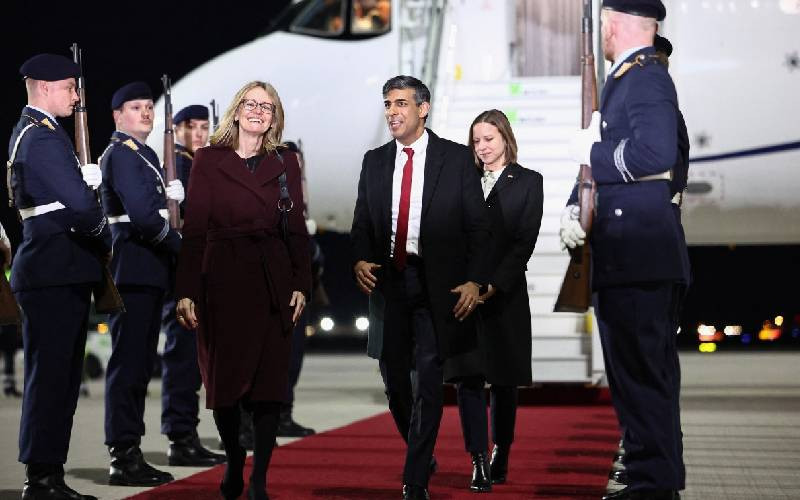By Richard Onyonka
For over two decades, the international community has chosen piecemeal tactics to deal with Somalia. Kenya has tacitly played along, diligently attending the almost monthly international meetings on Somalia and numerous peace negotiations.
One almost loses track of the various agreements signed by Somalis to end violence, all named after Africa’s cities where they have taken place – Sodere Agreement, Cairo Agreement, Addis Ababa Agreement, Arta Agreement, Nairobi Conference, Djibouti Agreement, Kampala Accord – just to name a few, yet peace has proven elusive.
In a marked departure from its history, instead of hosting another Somalia Conference, Kenya was this month forced to make the difficult decision of deploying its troops to Somalia to defend its national security. This historical decision will remain a milestone. Operation Linda Nchi has so far received national applause. Kenyans are fed up by what they see as perceptions from the Al Shabaab of Kenya’s military incapacity to respond even to direct attacks in its hinterland.
With an economy that depends on tourism, Al Shabaab made the wrong decision in targeting tourists in Lamu, and humanitarian workers in Dadaab. Kenyan military personnel have frequently been killed or harmed in Al Shabaab ambushes.
I believe that the international community has given a covert nod to Kenya’s efforts. The Igad Council of Ministers held an extraordinary meeting on October 21 and adopted a communiquÈ expressing support for the Kenya’s operation.
Kenya has been one of the strongest supporters of President Ahmed. Early this year, the Speaker of the Federal Parliament, launched a vicious attack against the President pushing for August elections. That would have seen the president’s likely ouster. It was Kenya that led the charge in convincing the international community, the UN Security Council, and Somalis to extend his mandate for one more year. The Kenyan Government felt that there was a need to consolidate Amisom peacekeeping gains, after making early inroads in Mogadishu. It was too early to hold elections with no electoral or legal framework to guide it.
This support was in spite of reports from reliable sources that President Ahmed was being propped up by the radical Al Sheikh group.
Earlier statements attributed to President Ahmed as criticising the military actions of Kenya in ridding the country of the Al Shabaab were, therefore, shocking. It is somewhat reassuring that the Transitional Federal Government and the TFG Prime minister have clarified this position.
The TFG has affirmed that the communiquÈ signed on October 18, in Mogadishu by Kenyan Foreign Minister Moses Wetang’ula, the Somali Deputy Prime Minister, and Minister for Defence Hussein Arab Isse on military co-ordination had been signed. The communiquÈ is actually now an official document of the United Nations Security Council.
Kenya’s goal must be to ensure that there is a stable federal government in Somalia.
The instruments guiding this roadmap (the Djibouti Process and the Kampala Accords) recommend that the TFG must make deliberate attempts to negotiate with all players in Somalia, including Al Shabaab. This is the point I was making when I said that as an honest broker in the Somalia crisis, Kenya must always leave a window of opportunity for a negotiated settlement. This window must include Al Shabaab once they renounce violence.
Somalia needs to be pressured to do what any government does – to govern. President Sheikh Sharif needs to rid himself of the Al Sheikh extremists around him that are making it difficult for him to bring real reconciliation to Somalia. He must rise up to be a statesman and bridge clan differences. PM Abdiweli Mohamed Ali has stated clear priorities for his government; it is now time to deliver. As Kenya engages in Somalia, we must be aware that this engagement preemptively includes insurgency, counterinsurgency, and propaganda.
We must be steadfast and clear in our strategic objectives and provide an exit strategy. This may include a three-pronged approach.
Firstly, we must proceed on the military front by suffocating the Al Shabaab from Kismayu to Mogadishu. Secondly, we must endeavor to implement the proposals of the UN Secretary General, Igad and the African Union on counter-piracy efforts. Thirdly, Kenya must realise that logistical support is needed urgently to sustain and consolidate current gains, including in the region of south central Somalia and a liberated Kismayu port. Peace and security must be a priority for the population to feel secure.
Stay informed. Subscribe to our newsletter
—The writer is Foreign Affairs Assistant minister. The views are not necessarily those of the Kenya Government
 The Standard Group Plc is a
multi-media organization with investments in media platforms spanning newspaper
print operations, television, radio broadcasting, digital and online services. The
Standard Group is recognized as a leading multi-media house in Kenya with a key
influence in matters of national and international interest.
The Standard Group Plc is a
multi-media organization with investments in media platforms spanning newspaper
print operations, television, radio broadcasting, digital and online services. The
Standard Group is recognized as a leading multi-media house in Kenya with a key
influence in matters of national and international interest.
 The Standard Group Plc is a
multi-media organization with investments in media platforms spanning newspaper
print operations, television, radio broadcasting, digital and online services. The
Standard Group is recognized as a leading multi-media house in Kenya with a key
influence in matters of national and international interest.
The Standard Group Plc is a
multi-media organization with investments in media platforms spanning newspaper
print operations, television, radio broadcasting, digital and online services. The
Standard Group is recognized as a leading multi-media house in Kenya with a key
influence in matters of national and international interest.







